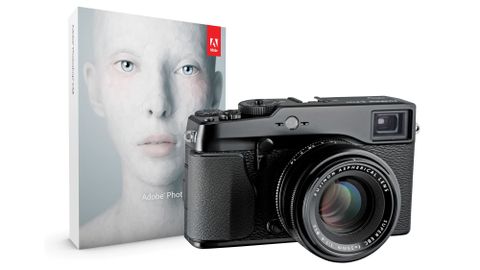
- #ADOBE CAMERA RAW UPDATE FOR CANON 6D HOW TO#
- #ADOBE CAMERA RAW UPDATE FOR CANON 6D MANUAL#
- #ADOBE CAMERA RAW UPDATE FOR CANON 6D TRIAL#
- #ADOBE CAMERA RAW UPDATE FOR CANON 6D SERIES#
Capture One and Lightroom have Whites as well as Highlights sliders, but in PhotoLab you have an overlap between the (automatic) Smart Lighting options and the (manual) Selective Tone adjustments, but you might need both, but whichever you use, once you’ve recovered highlight detail it leaves midtones and shadows looking somewhat flattened. Lightroom has – perhaps – a slightly nicer highlight roll-off and does keep midtones and shadows contrasty even when you use the Highlights and Whites sliders at quite high settings, but it can’t quite match Capture One’s ‘bite’. Its highlight roll-off isn’t always the best – the transition from blown detail to recoverable detail – in sky tones and clouds, for example, but it preserves midtone and shadow clarity brilliantly.
#ADOBE CAMERA RAW UPDATE FOR CANON 6D SERIES#
Testing all three programs across a series of RAW files I found there was little difference in the amount of highlight detail each could recover, when pushed, but that images looked quite different afterwards.Ĭapture One was the most convincing. PhotoLab’s shadow and highlight recover is effective, but feels very complicated compared to the others.
#ADOBE CAMERA RAW UPDATE FOR CANON 6D MANUAL#
There are also manual Selective Tone adjusters for manual control but it’s not clear either how these interact with the other two.
#ADOBE CAMERA RAW UPDATE FOR CANON 6D HOW TO#
PhotoLab complicates things with Exposure Compensation and Smart Lighting tools which interact to automatically optimise the image’s tonal range, but it’s not always clear what the program is doing and how to affect it manually. All three of these programs offer shadow and highlight recovery tools, but Capture One’s High Dynamic Range tools are probably the simplest and most obvious to use, though Lightroom’s shadow and highlight recovery is straightforward and effective too. One of the big reasons for shooting RAW files over JPEGs is the ability to recover blown highlights and bring up dense shadow detail.

There are no Fujifilm cameras in this comparison.

What this comparison is mostly about is just how good each one of them is at processing RAW images, and to test this out I’m going to use compare the RAW image processing of files from a series different cameras, including a Canon EOS 6D Mark II, Sony A6000, Nikon Z 6 and Olympus OM-D E-M1 Mark II.
#ADOBE CAMERA RAW UPDATE FOR CANON 6D TRIAL#


 0 kommentar(er)
0 kommentar(er)
